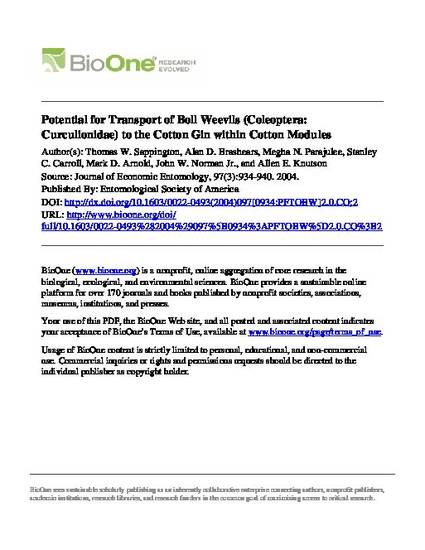
There is concern that cotton gins located in boll weevil, Anthonomus grandis grandisBoheman, eradication zones serving customers in adjacent infested zones may serve as a site for boll weevil reintroductions if weevils are transported alive inside cotton modules. We surveyed fields in three distinct areas of Texas and found that weevils can be present in large numbers in cotton fields that have been defoliated and desiccated in preparation for harvest, both as free adults and as immatures inside unopened bolls. Harvested cotton taken from module builders indicated that ≈100–3,700 adult boll weevils were packed inside modules constructed at the sampled fields. Marked weevils were forced through a laboratory field cleaner (bur extractor) commonly mounted on stripper-harvesters, and 14% were recovered alive in the seed cotton fraction and lived at least to 24 h. Survival of weevils placed inside modules declined over time up to 7 d, but the magnitude of the decline varied with experimental conditions. In one experiment, 91% of the weevils survived to 7 d, whereas under harsher environmental conditions, only 11% survived that long. Together, our results indicate that when cotton is harvested in an infested area, boll weevils likely will be packed alive into cotton modules, and many will still be alive by the time the module is fed into the gin, at least up to 7 d after the module’s construction.
Available at: http://works.bepress.com/thomas_sappington/34/

This article is from Journal of Economic Entomology 97 (2004): 934, doi:10.1603/0022-0493(2004)097[0934:PFTOBW]2.0.CO;2.